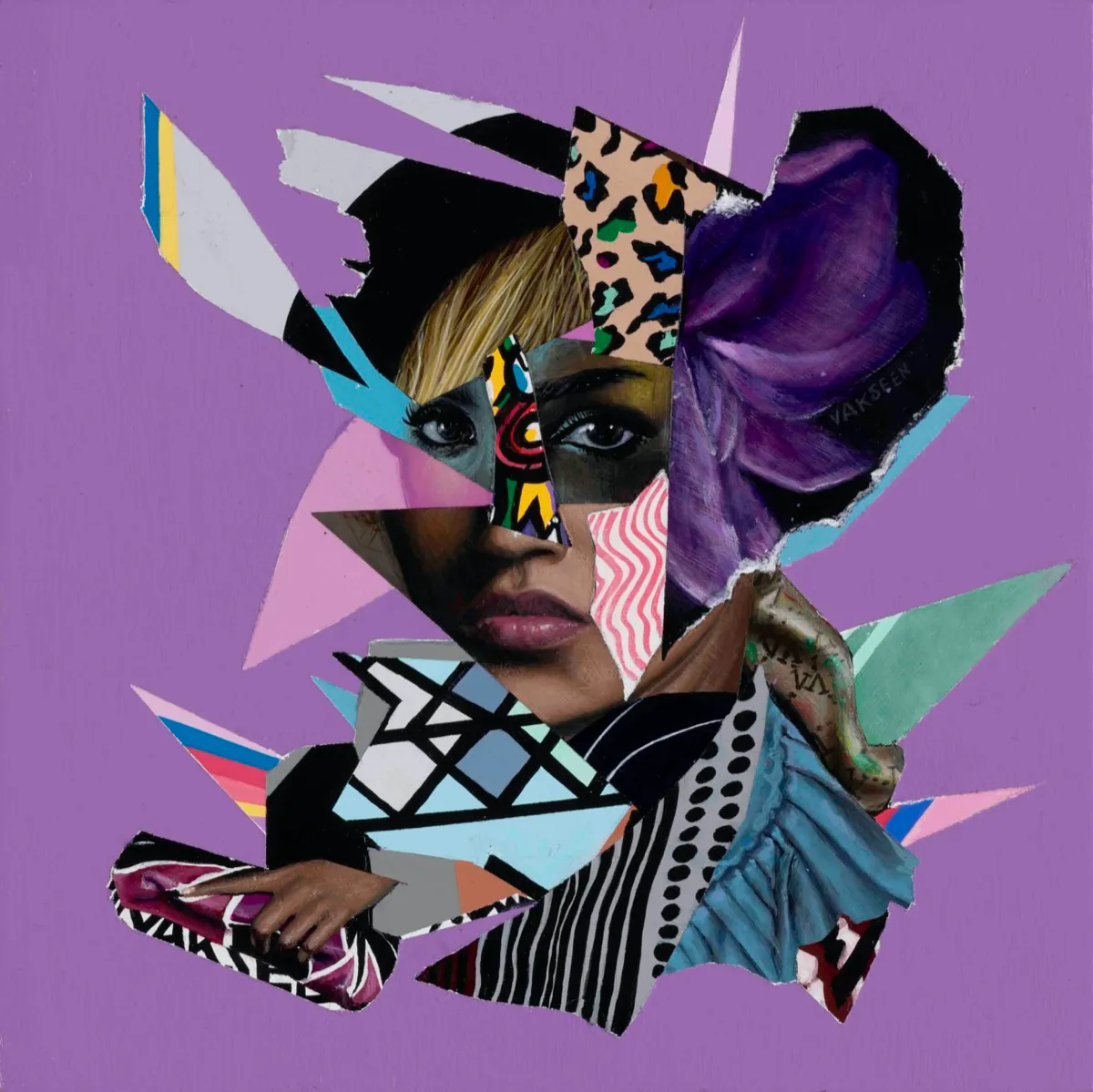
Best Blockchain for NFT Art – Ethereum, Tezos, or Solana?
As a legitimate creative and financial outlet for digital artists worldwide, NFT art is starting to come back strong.
But the success of your NFT drop depends heavily on one critical decision: which blockchain to mint on.
According to CryptoSlam, as of Q1 2025, over 70% of total NFT sales volume still occurs on Ethereum, but newer chains like Solana and Tezos are quickly gaining market share.
Ilunafriq offers crypto artists a way to bypass the limitations of single-chain visibility. It unites your entire NFT presence across multiple platforms, chains, and collections.
This article dives deep into Ethereum, Tezos, and Solana to help you understand each platform and how Ilunafriq can bring them together.
Key Takeaways
- Ethereum is the top chain for prestige and sales volume.
- Solana appeals to creators who prioritize speed and low costs.
- Ilunafriq makes it easier to showcase NFTs from all chains in one place.
Best Blockchain for NFT Art
Ethereum: The OG of NFT Art
Ethereum is the original home of NFTs, launched in 2015 with support for smart contracts that made NFT creation possible. The introduction of the ERC-721 token standard in 2017 marked a turning point in digital ownership, enabling unique, verifiable assets to live on-chain.
Today, Ethereum continues to be the primary blockchain for NFT art, commanding the highest volume in NFT transactions.
Pros
- Massive collector base and liquidity: Ethereum has the largest audience of serious NFT investors.
- Broad compatibility: Most major NFT marketplaces and tools are built first for Ethereum.
- Proven infrastructure: A rich history of successful drops and long-standing community support.
Cons
- High gas fees: Minting or transferring NFTs can cost anywhere from $10 to over $100 depending on network usage.
- Slower speeds: Ethereum processes fewer transactions per second than competitors.
- Environmental criticism: Despite moving to proof-of-stake, some artists still face pushback from eco-conscious buyers.
Notable Projects on Ethereum
- CryptoPunks – One of the first major NFT projects, launched in 2017, and a symbol of NFT culture.
- Bored Ape Yacht Club (BAYC) – A high-profile collection that has attracted celebrities and major brand partnerships.
- Art Blocks – A platform for generative art that has launched some of the most valuable and creative NFTs in the space.
- World of Women – A diversity-focused project that has gained significant traction for supporting female creators.
Best For
Artists releasing high-end or exclusive 1/1 pieces, or those seeking validation by launching on the same chain as blue-chip projects like CryptoPunks or Art Blocks.
Tezos: The Sustainable Choice
Tezos is a self-amending, proof-of-stake blockchain launched in 2018. It has built a reputation for sustainability, affordability, and its vibrant digital art community. Tezos supports seamless upgrades without hard forks, making it more adaptable to artist and developer needs.
Pros
- Ultra-low minting costs: Creators can mint NFTs for less than $0.01, making experimentation more accessible.
- Environmentally efficient: The blockchain consumes about 2.5 million times less energy than Ethereum did pre-merge.
- Artist-friendly platforms: Ecosystems like Objkt and fx(hash) emphasize indie, experimental, and generative works.
Cons
- Smaller audience: Fewer collectors means lower potential bidding wars or resale volume.
- Limited tools: Fewer integrations with major analytics and promotional tools used by Ethereum-based artists.
- Less recognition: Tezos-native collections have less brand power outside of the Web3 art community.
Notable Projects on Tezos
- fx(hash) – A popular platform for generative art that has built a strong, loyal artist community.
- Objkt – The leading marketplace on Tezos, hosting everything from 1/1 art to experimental collectibles.
- Versum – A curated space designed for digital artists to showcase their work in clean, customizable galleries.
- Kalamint – One of the first NFT platforms on Tezos, focused on artist-centric tools and sustainability.
Best For
Emerging or experimental artists focused on creative freedom, eco-conscious values, or generative formats who are building long-term artistic projects.
Solana: Speed Meets Scalability
Solana is a high-throughput blockchain designed to scale with demand, utilizing a unique consensus mechanism to achieve its performance.
Launched in 2020, it offers low-cost and high-speed transactions, which makes it ideal for NFT projects that prioritize accessibility and gamified engagement. Solana’s architecture allows it to process over 50,000 transactions per second.
Pros
- Extremely low transaction fees: Minting and transfers typically cost fractions of a cent.
- Lightning-fast speed: Transactions are confirmed in under a second, even during busy periods.
- Popular marketplaces: Magic Eden and Tensor serve active communities with fast trading experiences and low entry barriers.
Cons
- Network instability: Solana has experienced temporary outages that have affected launches and mint reliability.
- Maturing tools: While improving, it still lags behind Ethereum in terms of fine art and institutional collector adoption.
- Perceived volatility: Investors may view Solana NFTs as more speculative, impacting long-term art valuation.
Notable Projects on Solana
- DeGods – One of the most prominent and valuable Solana-native PFP collections.
- Okay Bears – A widely recognized brand within Solana NFTs, known for strong marketing and community engagement.
- y00ts – A spin-off of DeGods, originally on Solana and one of the most traded collections.
- Aurory – A gaming-focused NFT project that combines art with play-to-earn mechanics.
Best For
Artists launching high-volume projects, open editions, collectibles, or gamified NFT experiences. Also ideal for creators experimenting with low-cost, high-frequency releases to build a large fan base.
Comparison Table: Ethereum vs Tezos vs Solana

Minting Costs Explained
Understanding Fees Across Ethereum, Tezos, and Solana
One of the first technical hurdles artists encounter is the cost of minting their work as NFTs. Each blockchain has a different fee structure depending on how its network operates. These costs can influence when and where you mint especially for artists working with limited budgets or planning large drops.
Ethereum Minting Costs
On Ethereum, minting costs are referred to as gas fees, which are paid in ETH. These fluctuate based on network activity, smart contract complexity, and even the time of day.
- Typical Range: $20–$100 per mint during peak times
- Tip: Mint during off-peak hours (e.g., early weekends or late nights UTC) to reduce fees
- Batch Minting: Advanced users can optimize batch mints with custom contracts, but it often requires developer assistance
Tezos Minting Costs
Tezos is known for its affordability and simplicity. Fees are predictable and negligible, making it perfect for experimentation.
- Typical Cost: Less than $0.01 per mint
- Tip: Platforms like fx(hash) and Objkt often batch and optimize transactions to reduce fees further
- Bonus: Some platforms even subsidize minting for featured artists
Solana Minting Costs
Solana offers some of the cheapest minting experiences due to its low-fee structure and high-speed architecture.
- Typical Cost: Under $0.001 per mint
- Tip: Ideal for high-volume collections or artists new to NFTs who want to avoid upfront costs
- Batch-Friendly: Tools like Metaplex make it easy to launch collections with thousands of assets efficiently
Why Ilunafriq is the Best Choice for NFT Artists
Choosing a blockchain used to mean locking yourself into a single ecosystem, often forcing compromises in fees, audience reach, or creative control.
But Ilunafriq eliminates these limitations by giving NFT artists a unified space to showcase their entire portfolio across Ethereum, Tezos, Solana, and beyond.
With Ilunafriq, you’re free to mint where it makes strategic sense, while maintaining a cohesive, professional identity.
Benefits of Using Ilunafriq
- Your collectors can browse your full body of work, no matter where each piece was minted.
- You can build curated galleries, grouping your NFTs by collection, style, chain, or narrative.
- Each piece in your gallery links directly to its marketplace listing (e.g., OpenSea, Objkt, Magic Eden), streamlining discovery and conversion.
- You get a single shareable URL for your multichain portfolio – ideal for bios, drops, and cross-promotion.
- You don’t need technical expertise to set it up – Ilunafriq syncs your wallets and collections automatically.
Ilunafriq is particularly valuable during multi-chain drop campaigns, artist retrospectives, or gallery showcases where seamless presentation matters.
Rather than relying on Linktree or manually maintaining separate pages, you get a mobile-first, visually dynamic interface tailored for art.
Whether you’re launching your first mint or managing an expansive portfolio across five chains, Ilunafriq gives you control, consistency, and clarity.
It helps you focus on growing your brand and connecting with collectors without the headache of platform-hopping or broken UX.
Final Thoughts
Your choice of blockchain can affect your visibility, transaction costs, and connection with collectors. Ethereum remains the go-to for prestige and collector confidence. Tezos offers a unique, environmentally friendly ecosystem, while Solana provides unmatched speed for high-volume drops.
Instead of choosing just one, use Ilunafriq to bring them all together. It’s the easiest way to present a complete, professional image of your work to collectors across the globe.
Explore your options. Showcase it all.
Visit Ilunafriq and start building your multichain gallery today.
Read Next:
- How to Create a Custom NFT Gallery and Boost Your Visibility
- How to Sell NFT Art Faster
- NFT Valuation Guide
FAQ
Is Ethereum still the best for NFT art?
Yes, Ethereum is still the top blockchain for artists looking for prestige and established collector bases.
Why are some artists switching to Tezos?
Many artists are drawn to Tezos for its affordability, eco-friendliness, and strong community for experimental digital art.
Is Solana good for NFT art?
Absolutely. Solana is ideal for creators who prioritize speed, scalability, and low fees, especially when launching large-scale or frequent drops.
Can I use all three blockchains?
Yes. In fact, many artists mint on multiple platforms to diversify their audience and opportunities.
How do I showcase a multichain NFT portfolio?
Platforms like Ilunafriq allow you to showcase NFTs from multiple blockchains in one mobile-optimized gallery, making it easier for fans to engage with your work.




